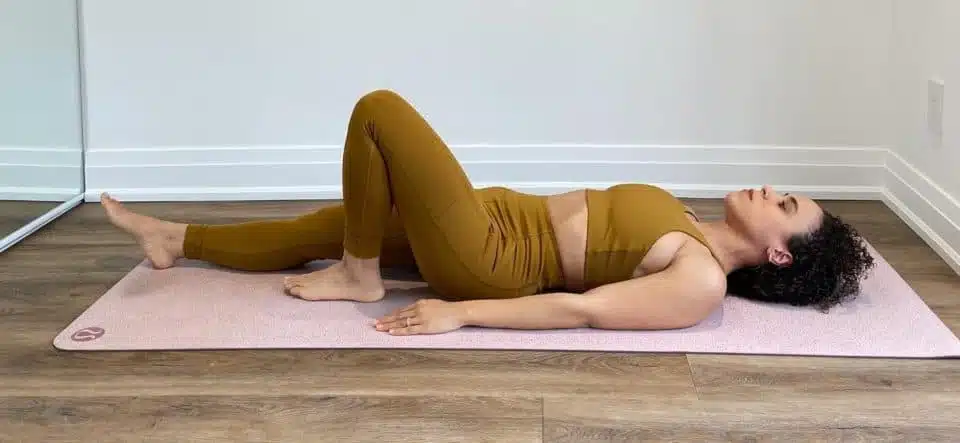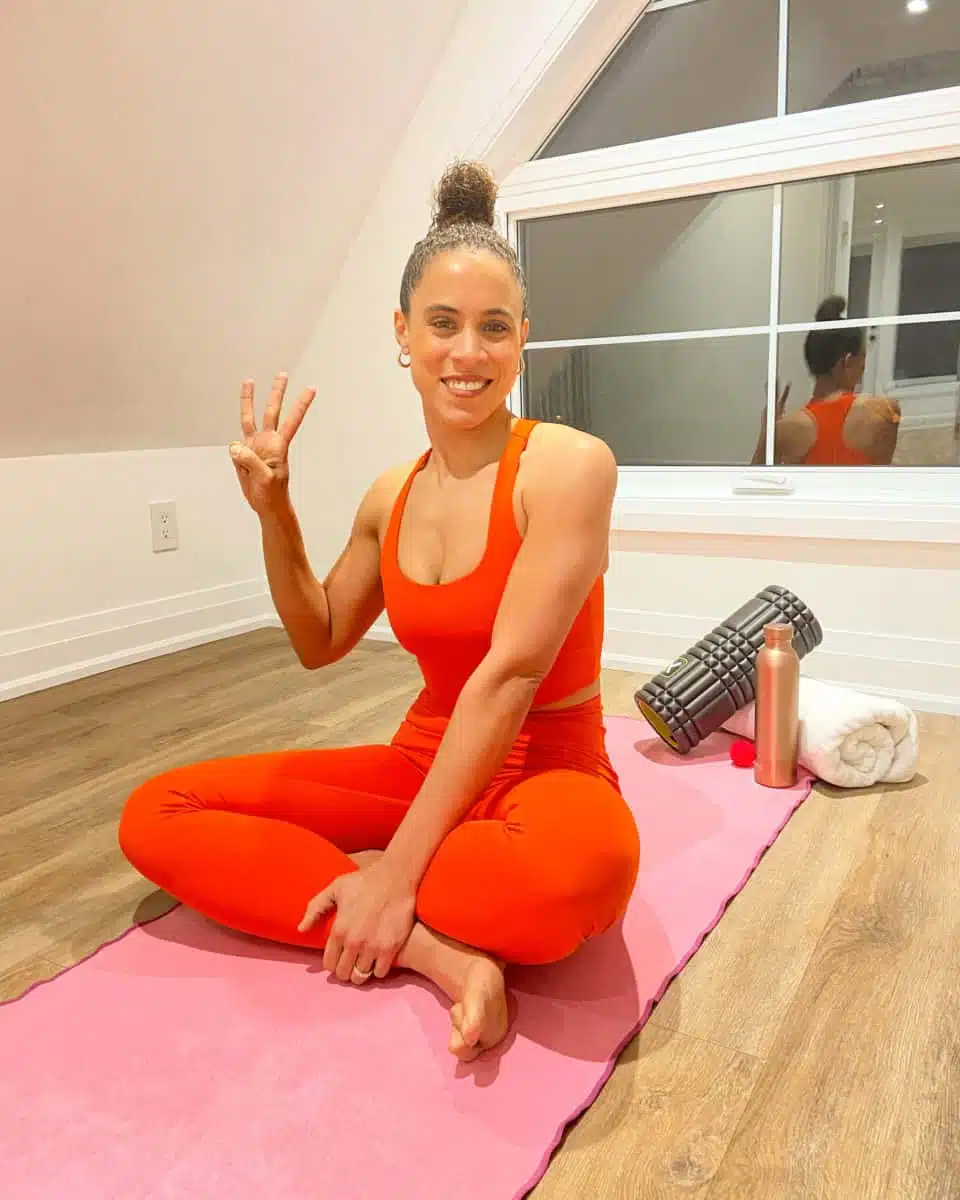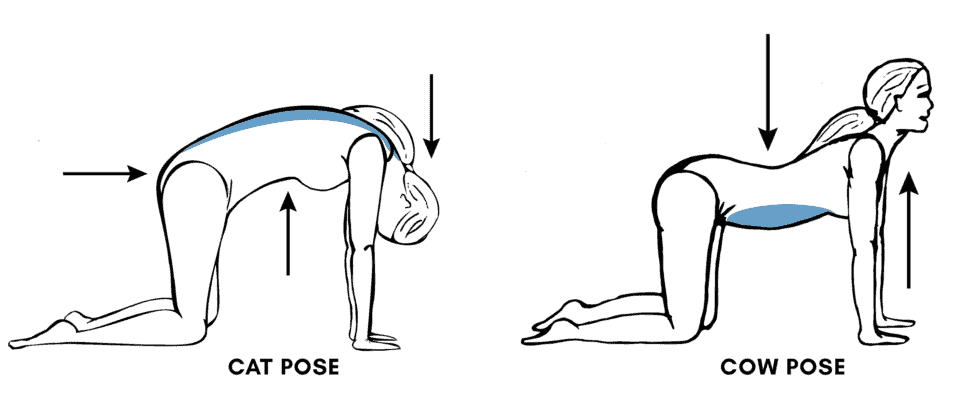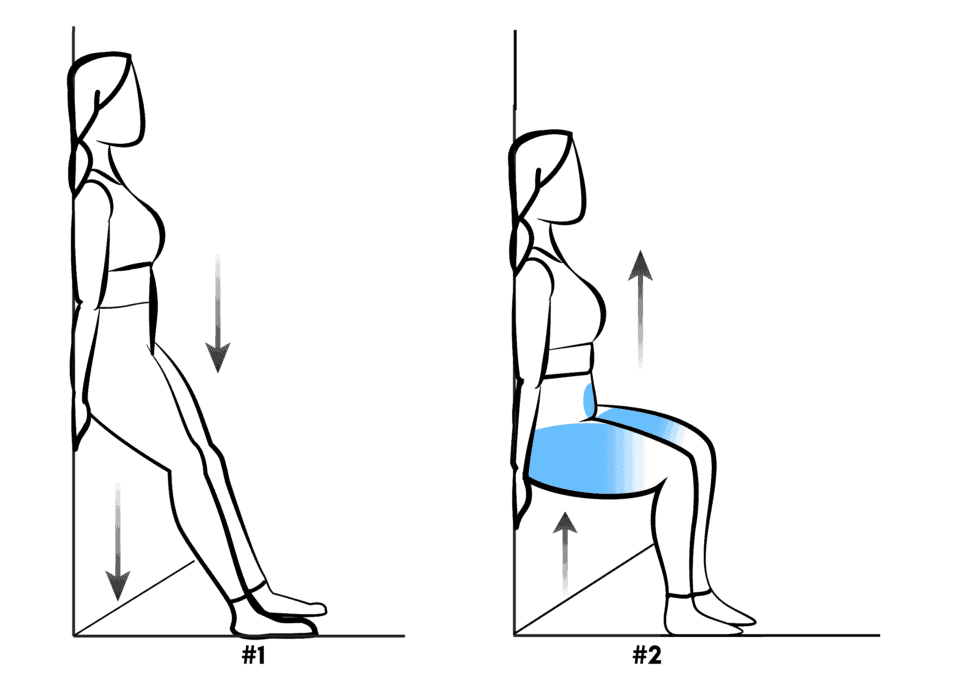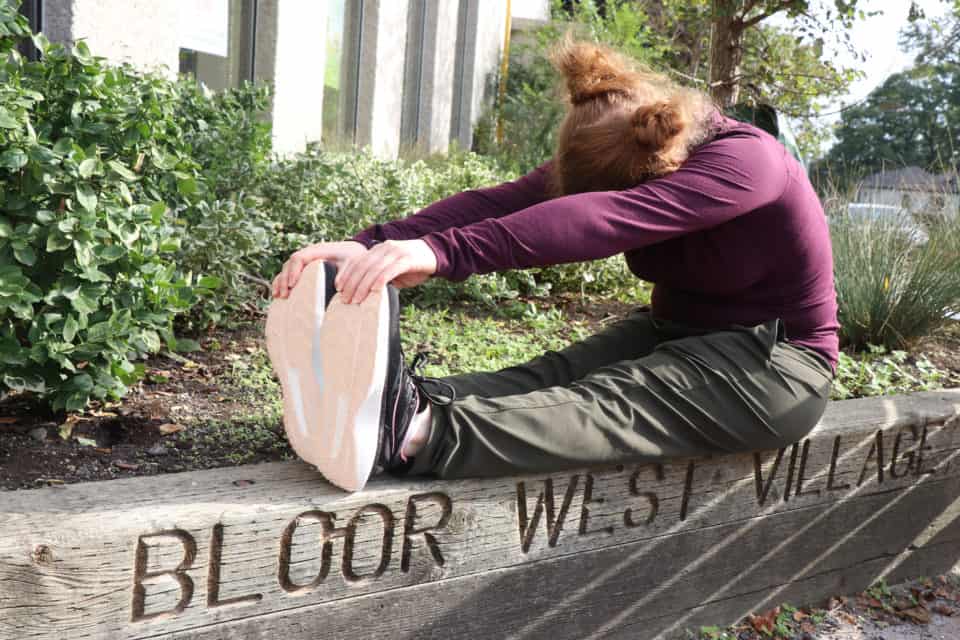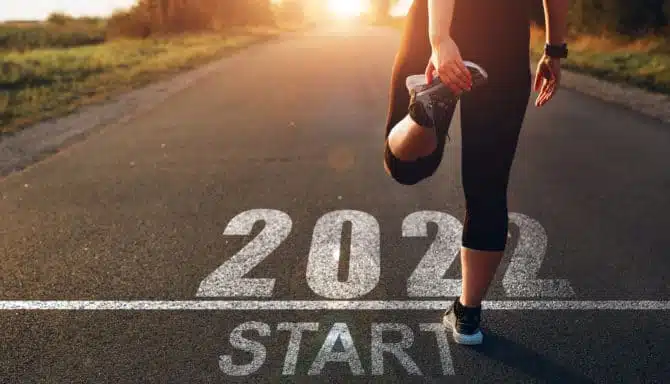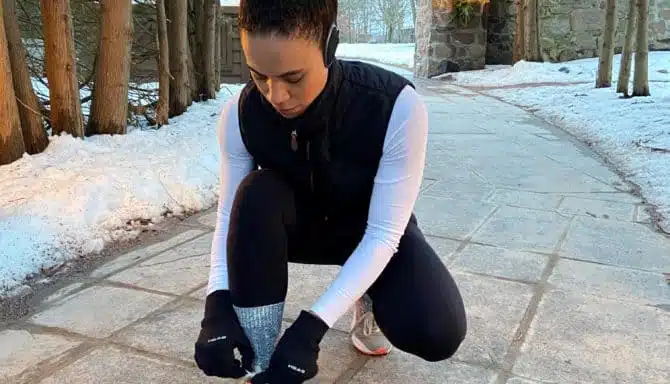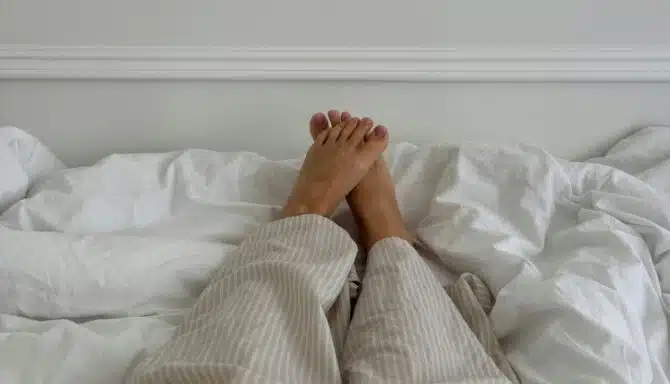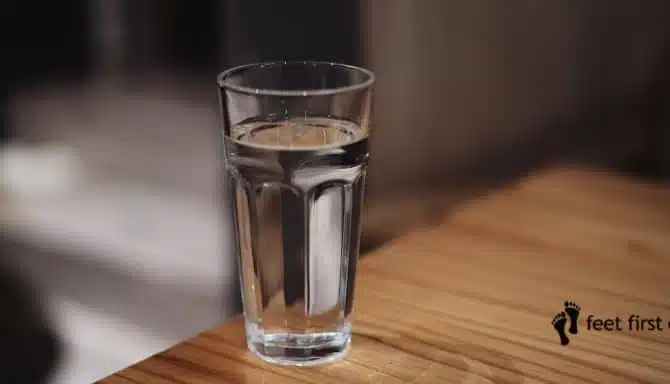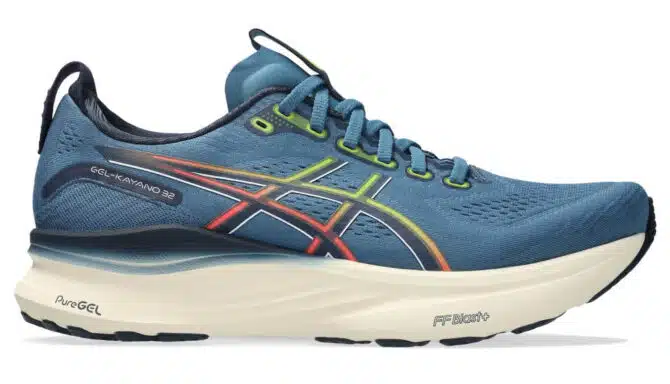Many people who suffer from different forms of arthritis know that it can flare up in the winter. This is mainly due to sudden drops in barometric pressure, causing already stressed joints to expand and trigger more pain. Whether you have rheumatoid arthritis, gout, osteoarthritis or psoriatic arthritis — chances are it becomes more of a burden when it’s cold outside.
Increased pain during the winter can make people with arthritis feel like exercise and an active lifestyle isn’t in the cards. While this feeling is understandable, it’s far from the truth: There are ways people with arthritis can meet their New Year’s resolutions to be more active, while managing pain flare-ups. In fact, increasing your fitness level and strengthening your joints and muscles is one of the best ways to treat and manage arthritis.
The fact remains that arthritis does come with limitations. We understand how the pain and limitations of arthritis can stop a fitness journey before it even begins. That’s why we curated a list of core exercises that are both manageable and effective. These exercises are designed to get you over that initial starting block. We also added instructive illustrations, tips and modifications to make things easier if you’re having trouble.
Why do I need to exercise my core if I have foot pain?
The core connects everything in our bodies. Contrary to popular belief, our core does not simply mean our abdominal area: It actually includes the muscles that support our spine and pelvis, extending from the diaphragm to the abdomen, pelvic floor, hip flexors, groin, buttocks and upper thighs. These muscles also play a critical role in supporting your bodyweight. If the core is weak, it puts extra burden on the feet and ankles, which increases your chances of experiencing foot pain and injury. Therefore, a strong core truly is the cornerstone for functionality and physical health.
Since core exercises keep everything working harmoniously, they are a critical component of effective arthritis treatment. They are proven to help take pressure off your joints, particularly the spine and hips. They also work as preventative measures to slow joint damage and improve stability and balance.
With that said, let’s look at some easy core exercises that can help people with arthritis! These exercises are a great starting point for people with pain, mobility issues, or beginners who haven’t exercised before. Be sure to also check out our Pinterest board and stretch series for additional simple routines that can help with a wide array of other foot conditions.
Beginner Tips to Help You Out
Keep the following tips when doing these exercises:
- Focus on the muscles you are trying to target: A lot of exercise is mental, so thinking about your form and the muscles you’re trying to work will go a long way toward strengthening them. If you don’t feel those muscles working, adjust your form until you do. To help you out, we made diagrams highlighting the targeted areas.
- Only move as far as you need to feel the muscles working; don’t force yourself: Extending your body beyond that point doesn’t actually achieve much and can cause injury. Don’t worry if you can’t move as far as the example – so long as you feel those muscles working, you’re good!
- If an exercise isn’t working, try a different one: There are many ways to exercise the same muscle groups, so if there’s an exercise that’s beyond your limits, don’t worry – leave it and try another one that works better for you!
- Don’t forget to breath! Okay, this may seem obvious, but a lot of people forget to breath when they exercise. Take deep controlled breaths as you move your muscles; don’t hold your breath or pant.
- Start slow: Typically, you would aim for 3 sets of 10 reps for each exercise. But to start, you can try for less and gradually work your way up.
Cat Cow
The cat cow stretch is also an excellent arthritis exercise for lower back and neck pain. It improves flexibility and your range of motion by managing joint stiffness and maintaining the elasticity of the muscles around your spine. This exercise can also help strengthen the spine and stimulate blood flow. Web MD notes that this is critical for those with rheumatoid arthritis.
To do this exercise:
- Start on all fours with your arms aligned with your shoulders and hips aligned with your knees.
- While inhaling, bend your back upward into the shape of the letter C and let your chin rest on your chest. This is the “cat” pose.
- Then exhale as your stomach extends downward towards the ground, raise your chest, and tilt your head and buttocks upward. This is the “cow” pose.
- Repeat by trying to reach a goal of ten times per rep.
You can also do this series as a stretch by holding each pose for 30 seconds. It feels fantastic after a long workday sitting at the computer.
Modifications: Don’t worry if you’re not able to move or stretch all the way; just extend to the point that you feel comfortable and feel it in the areas highlighted in the diagram above. If you’re having trouble feeling it, try moving your hands a bit and adjust your position.
Where you’ll feel it: When you’re doing the cat pose, you’ll feel a stretch in your back region. When you’re doing the cow pose, you’ll feel it in your chest and abdominal area. (see the above diagram for reference)
Lying Single-Leg Raises
Those with arthritis-related lower back pain often notice discomfort and soreness in the hip flexor and gluteal (buttock) region. The funny thing about pain is that even though we may feel it in the hip or butt (a literal pain in the you-know-what), because everything is connected, the pain in fact originates from the back.
That’s what makes lying single-leg raises so great: In addition to toning the muscles in your abdomen and legs, lying single-leg raises strengthens your hip flexors (the muscles in your pelvic and groin region) which helps with help with pain management. To target your arthritis symptoms as much as possible, it’s essential to make sure you alternate between legs when doing this exercise.
To do this exercise
- Start by lying on your back with your arms flat next to your sides.
- Keep your left leg bent with your foot on the ground and your right leg straight and flat to the ground.
- Lift your right leg towards the top of the left knee while keeping it straight. Hold the position for two seconds before slowly returning your leg back down. To start, you can aim for a goal of 10 reps per set, doing 3 sets (you can reduce this number if you need to).
- Switch legs and repeat.
Modifications: You don’t need to raise your leg all the way up. You only need to raise it high enough that you feel your abdomen working.
Where you’ll feel it: You’ll feel this one primarily in the abdominal region. You may also feel it a bit by your hip flexor/pelvic region as those are the muscles that work hardest during this exercise. Remember: don’t force yourself to move more than you comfortably can.
Chair & Wall Squats
A squat without a safety net can feel quite difficult for beginners with arthritis. That’s why a chair squat is a great foundation for getting used to this type of movement. Chair squats can improve the stability in the knee, hip and leg joints. Squats are a great all-in-one core exercise because they target multiple muscles groups in your core. This makes them very popular with physiotherapists.
To do your chair squats:
- Use a chair that can stay planted firmly to the ground. A non-cushioned chair is ideal
- Stand in front of the chair and face forward.
- With your arms extended outward, slowly bend your knees and lower your hips. Each time lightly touch the seat of the chair with your buttocks. Make sure you do this in one controlled motion (you want to avoid flopping onto the chair).
- Return to starting position and try to do 3 sets of 10 reps, if comfortable.
Wall Squats (Easier):
If you’re having trouble keeping your balance, or find yourself dropping onto the chair, you can then modify this exercise by doing it against a wall instead. To do a wall squat:
- Lean your back straight against a wall and plant both feet about 1-2 feet in front of you.
- Use the wall to keep your back straight and support your weight as you slowly lower yourself in a controlled manner.
- Make sure your knees don’t extend beyond your toes as you lower yourself. If they do, try putting your feet further out, or don’t go down as low.
- Slowly raise yourself back up to your starting position, and then repeat
Modifications & Adjustments: Only go down as low as you comfortably can while still feeling your muscles working – you don’t need to go down all the way. If your arthritis typically affects your knees, don’t go down as low; the less you lower yourself, the less your knees have to bend, which means less strain. It’s important to rest if your knee pain flares up.
Where you’ll feel it: You’ll definitely feel this one in your thighs. You also want to feel it in your butt and abdominal area. If you’re not, try adjusting your form, slow it down, or clench your abdomen and buttock as you squat.
Towel Scrunches (Toe Curls)
As a foot clinic, we haven’t forgotten about exercises targeting arthritis-related foot pain. Your feet have three dozen joints, and since arthritis causes joint deterioration, these pain flare-ups can easily occur in our feet. Towel scrunches can help relieve joint stiffness in the feet for arthritis patients. Working the foot muscles during exercise can also prevent your muscles from becoming weak or atrophied due to neglect. This only contributes to worsening pain and mobility problems.
To do towel scrunches:
- Lay a towel flat to the ground.
- Sitting near the edge of a chair, keep your feet planted to the ground.
- With curled toes, scrunch your feet and take hold of the towel.
- Pull the towel towards you with your toes and then release it.
- Ease into doing ten reps of towel scrunches.
Where you’ll feel it: You’ll feel this one in the feet, although it may not feel as intense as some of the other exercises.
Tip: This is a great exercise to do when you’re sitting on the couch watching TV (who said TV was a waste of time!?)
Looking For More Exercises For Arthritis?
There are just simply too many great core exercises to cover in one article. So, we listed a bunch of other ones you can try. Just click on the link to learn more!
Some of these (and more) will be featured in Part 2 of our Beginner’s Guide to Exercises for Relieving Arthritis, so stay tuned!
